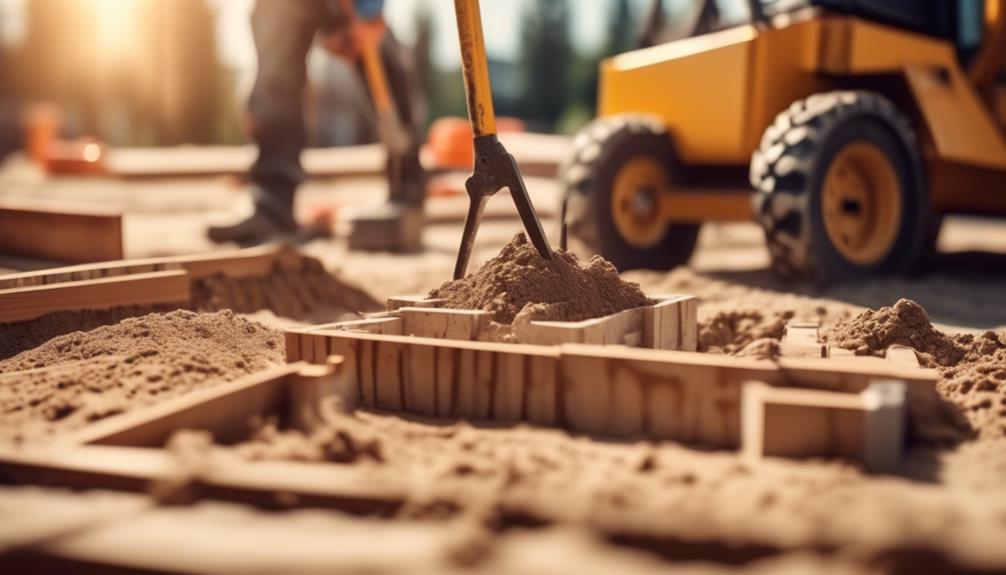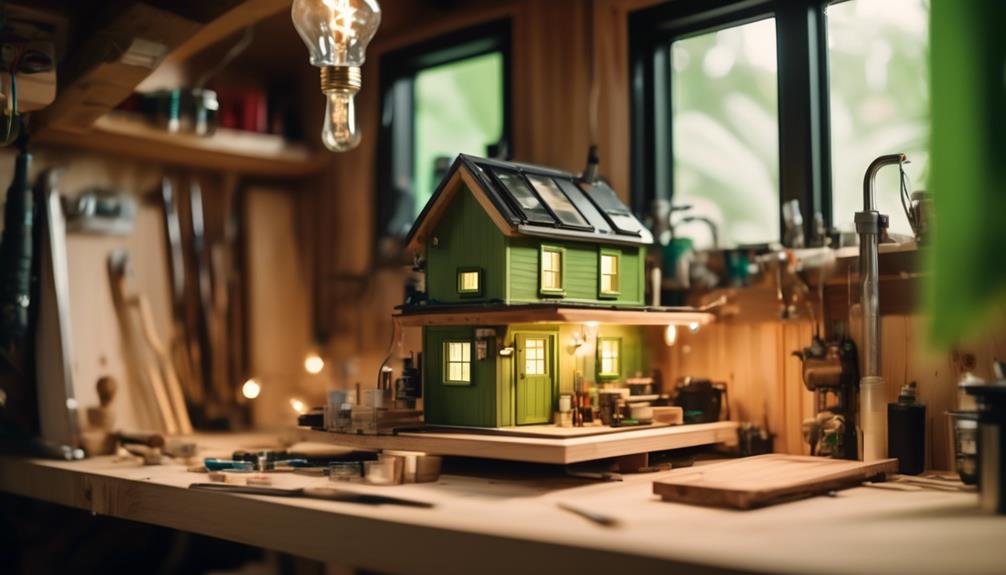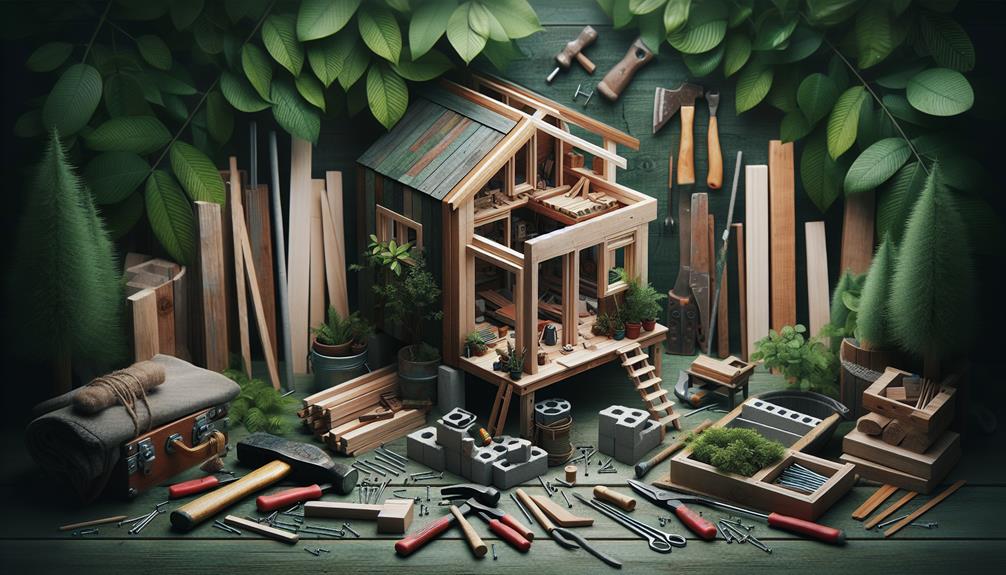Tackling the task of tiny home construction can be tremendously tempting, yet it's crucial to curb your enthusiasm with careful planning and precision. You're about to embark on a journey that not only tests your craftsmanship but also challenges your ability to adapt and overcome.
As you consider the compact corners and minimalistic mindset required to create your cozy abode, you'll need more than just a hammer and nails. This comprehensive guide promises to provide you with the insights and instructions necessary to navigate the nuances of building a Tiny House on Wheels (THOW) from the ground up.
But before you begin drafting your dream dwelling, there's much to ponder about the path ahead, from legal legwork to the last lick of paint. Stay with me, and I'll share with you the secrets to making your tiny house both structurally sound and splendidly suited to your personal needs.
Key Takeaways
- Understanding the Tiny House Movement is essential before embarking on a DIY tiny home project.
- Researching cost estimation resources and exploring financial efficiency strategies can help ensure the project stays within budget.
- Familiarizing oneself with building codes and zoning laws is crucial to avoid legal issues during the construction process.
- Selecting high-quality materials and tools, such as a sturdy trailer and energy-efficient windows and doors, is important for the durability and sustainability of the tiny home.
Planning Your Tiny Home
Embarking on the journey to construct a tiny home requires meticulous planning. This begins with a thorough understanding of the Tiny House Movement, cost estimation resources, and strategies for financial efficiency.
You'll need to master SketchUp to digitally craft your floor plan, ensuring you optimize every square footage. Delving into tiny house building, you must investigate building codes and zoning laws. These are crucial for selecting a build site free from HOA constraints.
As you start building a tiny house, it's important to compile a detailed materials list. Research current prices for an accurate budget. Finally, weigh the decision between engaging an architect for a bespoke design or opting for a prefab tiny house kit.
This structured approach is pivotal in planning your tiny home. It seamlessly merges innovation with practicality.
Sourcing Materials and Tools
Having established a solid plan for your tiny home, you'll now need to focus on acquiring the right materials and tools, ensuring you stay within budget while meeting all construction needs.
When building a tiny home, selecting a tiny house trailer is foundational. Ensure it's robust enough to support your structure's weight and design.
Here's what to consider:
- Opt for energy-efficient windows and doors that will fit your design and help you save money on heating and cooling.
- Choose a durable metal roofing system, which is essential for weather protection and longevity.
- Don't skimp on the plumbing and electrical; invest in quality components for safety and reliability.
Remember to include a vapor barrier and house wrap for moisture control. Select electrical outlets and other building materials that offer both functionality and innovative design.
Laying the Foundation

Before you can raise walls or envision rooms, it's crucial to start with a level and well-insulated foundation on your trailer, as this will set the stage for a stable and energy-efficient tiny home. When building a tiny house, especially a tiny house on wheels, this step is paramount.
Ensure the trailer is level upon arrival. Opt for high-grade R-23 Rockwool insulation, adhering to Tiny Life standards for sustainability and thermal performance.
For subfloor sheathing, 3/4 T&G plywood or OSB is recommended, providing a robust base to start building upon. While planning your House Design, consider integrating undercarriage flashing to protect against moisture and pests.
Constructing the Framework
Ensure your tiny house trailer is perfectly level, as this precision will be fundamental for erecting a structurally sound and stable framework.
When building your tiny home, the construction of the walls and roof must follow a meticulous process:
- Wall Assembly: Construct wall frames on a flat surface before standing them up. Use sturdy sheathing to brace the walls, integrating openings for windows and doors.
- Roof Structure: Choose a roofing material that compliments your design. Install rafters, cover with tar paper, and finish with fascia boards. Insulate your tiny home's attic space efficiently.
- Access Points: Incorporate Stairs or ladders with careful consideration of space and safety.
Work must be precise; consider hiring a professional if your building experience is limited.
This innovative approach ensures a durable and energy-efficient tiny home.
Installing Utilities and Finishes

Once the structural frame of your tiny home is complete, it's crucial to turn your attention to the installation of utilities and finishes.
Begin by carefully planning the electrical, plumbing, and HVAC systems to maximize space and efficiency. This includes prioritizing compact, high-efficiency options like a tankless water heater to heat and cool your home more effectively. If you're looking for innovative energy solutions, consider installing solar panels, which can significantly reduce your ecological footprint.
When it comes to installing major appliances and fixtures, it's important to do so one at a time, ensuring each integrates seamlessly into your living space. This allows you to prioritize functionality and ensure that everything fits properly.
As you move on to finishes, focus on materials that complement the functionality of your tiny home. This may include choosing durable and space-saving options that are easy to clean and maintain.
Throughout the installation process, it's essential to seek professional advice to ensure safety and compliance with local building codes. Working with experts will help you avoid any potential hazards and ensure that your tiny home is up to standard.
Frequently Asked Questions
How to Build a Tiny House Guide?
You'll need to consider design, zoning laws, material selection, and foundation choices. Integrate a loft, sustainability features, and optimize space with custom furnishings. Research insulation options and utility connections for innovative tiny house living.
Can I Build a Tiny House by Myself?
You can build a tiny house yourself, assessing skills for zoning regulations, choosing tools, sourcing materials, and learning building codes. Design inspiration, space optimization, foundation selection, sustainability, and weatherproofing are crucial for innovative DIY success.
How Much Does It Cost to Build a Tiny Home From Scratch?
Building a tiny home from scratch involves budget planning, material selection, and tackling permit expenses. You'll factor in design costs, land acquisition, utility hookups, and possibly a trailer foundation for mobility and resale value.
How Long Does It Take to Build a Tiny House From Scratch?
Building a tiny house from scratch typically takes 2-4 months, depending on planning duration, permit processing, material sourcing, and weather impact. Ensure your project timeline includes design finalization and skill assessment for efficiency.
Conclusion
Imagine stepping into your own tiny haven, wheels ready to roll towards any horizon. You've hammered every nail, sawed each board, and painted every inch with personal flair. Your hands, once uncertain, now wield tools with expert precision.
The scent of fresh lumber lingers; it's the fragrance of accomplishment. This guide has been your blueprint, transforming a daunting task into a triumph of self-reliance.
Now, it's not just a house—it's your handcrafted home on the move.

